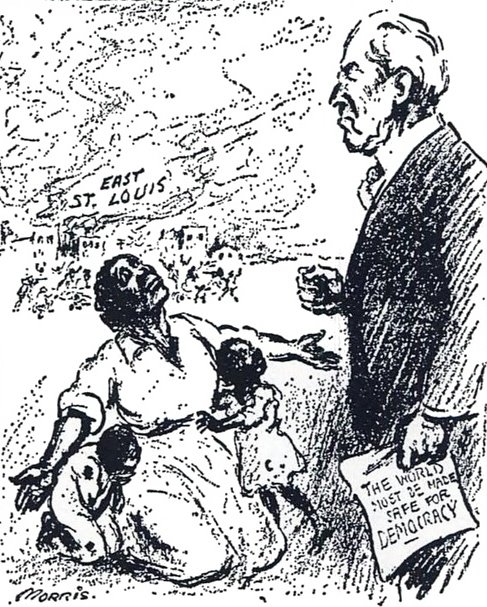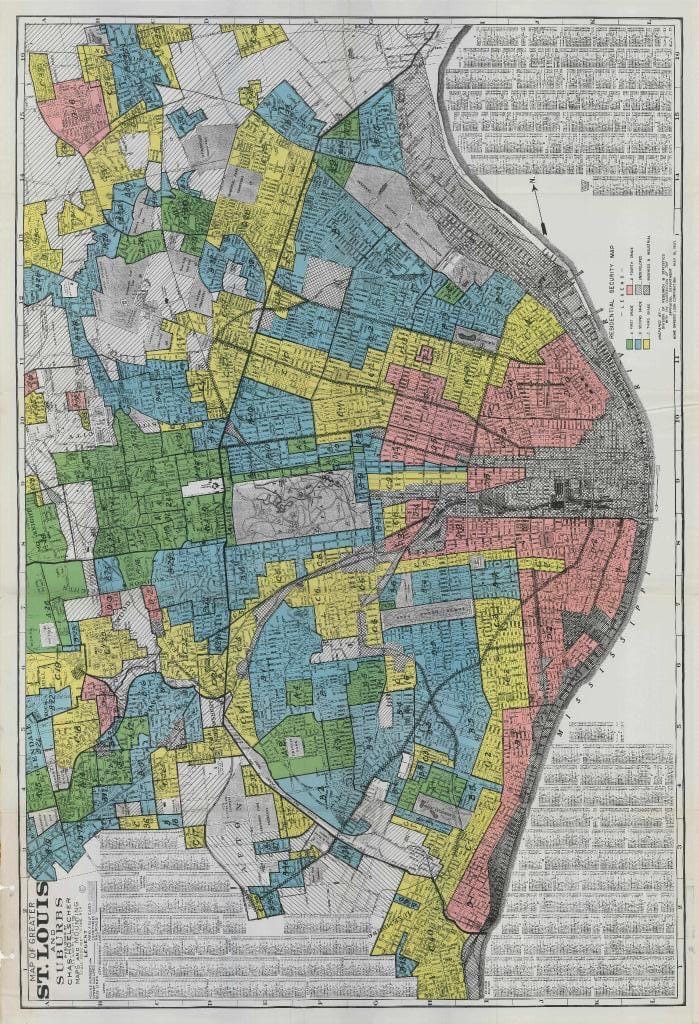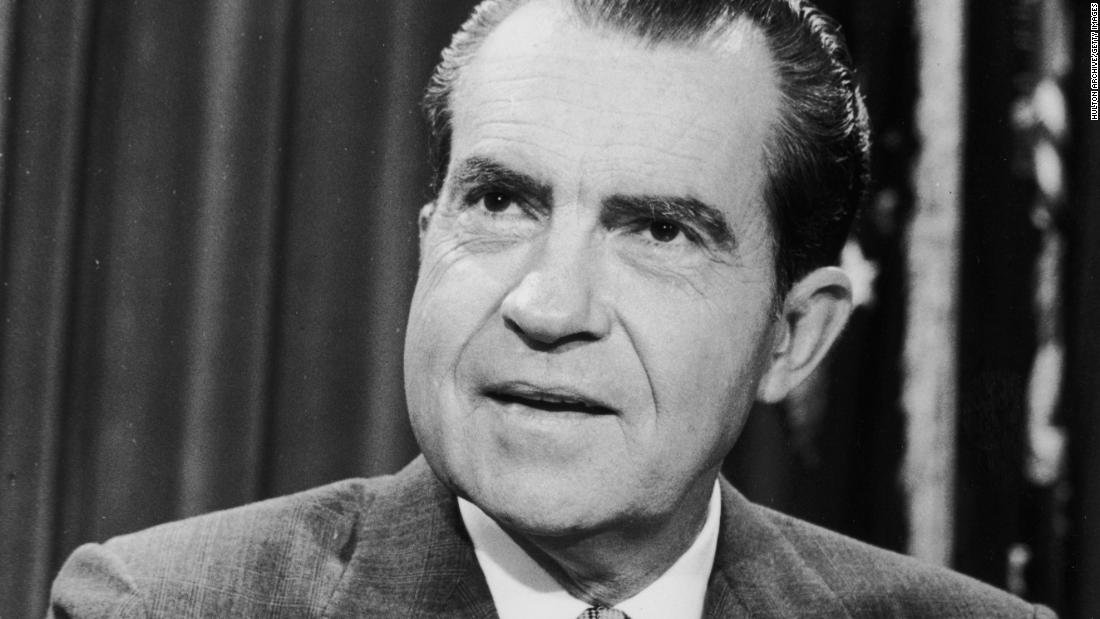History
We start by tracing the early experience of African Americans in 1619 and overview how racial views from Europe influenced the early structures of governance from the colonies through the founding of the United States to the end of the nineteenth century.
We begin with the arrival of the first African slaves on the North American shores in 1619 and conclude with the resurgence of white supremacy in 2019. While the history section is, for now, complete, we will continuously update the website. The story does not end in 2023.
We hope this historical overview is a first step toward creating a more just and democratic society. As communities organize to advocate for more economic opportunity, community-based policing, and fair access to health care and education, we all benefit from understanding the systems that contributed to the inequalities and biases experienced today.
1904: World’s Fair
The ultimate goal of the City Beautiful movement was to “encourage inhabitants to become more productive and patriotic” (Campbell, p. 18). While most of the ambitious plans for the City Beautiful were not realized, St. Louis and the state of Missouri did invest millions of dollars clearing land, building temporary structures, and diverting waterways to prepare for the 1904 World’s Fair to celebrate the Louisiana Purchase.
1910: The First Great Migration
By 1910, white control of southern rural America, enforced by Jim Crow laws, made life for African Americans in the South intolerable. Hoping to find more freedom and better economic opportunity elsewhere, many African Americans moved with family and friends to the cities, especially northern cities and cities located in border states.
1917: East St. Louis Riot
On July 2, 1917 mobs of armed white people attacked Black workers at the Aluminum Ore Company in East St. Louis. White workers were upset that the company had hired Black people in an attempt to break a labor strike. The results were disastrous as white workers burned buildings and shot African Americans.
1919: Segregated Medical Care & The Homer G. Phillips Hospital
The complex ramifications for such a racially informed pseudoscience went far beyond simply justifying prejudices and segregation practices, eugenics and such racism had a concrete and direct negative impact on health outcomes for African Americans in the St. Louis region.
1921: The Tulsa Riot
Also known as “Black Wall Street,” the Greenwood section of Tulsa, Oklahoma housed most of the black city’s population. On May 30th, Dick Rowland, a 19 year old shoe-shiner, was accused of attempting to rape a 17 year old white elevator operator, Sarah Page.
1929: The Great Depression
The American economy crumbled in 1929 with the financial crash, which began a period known as The Great Depression. As with all economic downturns, those closest to subsistence living suffer the most, leaving African Americans disproportionately affected.
1933: The New Deal
African Americans suffered disproportionately under the Great Depression. The programs created to ameliorate some of the effects of the economic crash benefited poor whites and blocked poor Black people.
1935: Redlining
The systemic racism underpinning these HOLC maps devastated African American homeownership and generational wealth (wealth and security passed from parents to children) produced by home equity.
1939: World War II
During the Depression and before WWII, African Americans in Saint Louis continued to struggle.
1944: The GI Bill
One benefit of serving in WWII was the promise of the GI Bill, which provided veterans with assistance through education, job training, and low-cost mortgages; however, African Americans were often excluded from these benefits, because their military service was limited to “mostly menial and low-paying” military roles.
1947: The Gateway Arch
As early as 1935, Saint Louis city leaders and urban developers had discussed a memorial on the Mississippi River. But the roots of the Gateway Arch stretch back to the City Beautiful movement of the early 1900’s when Progressive Era politicians and civic organizers strove to improve the aesthetics of Saint Louis along with its socioeconomic situation. It wasn’t until the 1940s, 1950s, and 1960s that the vision of a memorial to America’s past and its future would be designed and built.
1950: Blockbusting
Real estate speculators were increasing their use of a prejudice-driven tactic called “blockbusting'' to clear entire neighborhoods once populated by middle- or upper-class whites and selling or renting houses at large profits to African Americans who had few choices for home ownership. At its most basic level, blockbusting was the process of scaring white people out of neighborhoods so corrupt investors could buy their houses at a reduced price and then sell or rent those same houses to African Americans at a huge profit.
1956: Highway Revolts
During Nixon’s term, African Americans were subjugated to more than just racist drug laws. Using the Federal Aid Highway Act of 1956 as support, federal and state governments passed racist zoning and “redevelopment” laws that forced hundreds of thousands of African Americans from their city homes and into other equally marginalized neighborhoods or poorly constructed public housing. This mass displacement was enacted to make room for “beltways” around cities and freeways through urban centers, which were quickly being transformed from “blighted” black neighborhoods to profitable commercial centers, such as sports arenas.
1963: Civil Rights
The ongoing nationwide housing crisis for African Americans and other forms of systemic racism led to significant civil unrest in the 1950’s and beyond.
1964: President Johnson’s “War on Crime”
In 1964, as President Johnson prepared to sign the Voting Rights Act into law, he also signed the Law Enforcement Assistance Act. This Act represented a part of Johnson’s new “war on crime,” which aimed at cleaning up urban violence and stemming the tide of what some saw as a downward trend towards increased societal disintegration.
1967: The Long, Hot Summer
In 1967, growing tensions erupted into what came to be known as “the Long, Hot Summer of 1967.” Race uprisings—167 of them in large and small cities across America—began in Newark, New Jersey in response to housing and employment shortages and in response to the decreasing economic opportunities for African Americans.
1969: Housing Crises
The 1970s were marked by continued social unrest due to the Vietnam War and to inequities African Americans faced in housing, education, employment, and the judicial system. Lacking the “generational wealth” that resulted from the asset accumulation related to home ownership made possible by the GI Bill, most African Americans faced an increasing number of obstacles generated and maintained by a white-centered culture.
1970: Nixon’s War on Drugs
Race uprisings in the late 1960s and ongoing demonstrations against the war in Vietnam left many American voters feeling uncertain and afraid of the future. Richard M. Nixon, the Republican presidential candidate from California, played on these fears by inventing a “war on drugs,” which targeted war demonstrators and African Americans.
1970: “Hiding the Poor”
In addition to freeway construction, corporate-driven “redevelopment” projects, supported by local banks and powerful businesses like Anheuser-Busch and McDonald Aircraft, began work on “a metropolitan research corridor with St. Louis City’s Central Corridor as its epicenter.”
1970: Employment Challenges
While housing remained structurally aligned against African Americans, unemployment also grew.



















